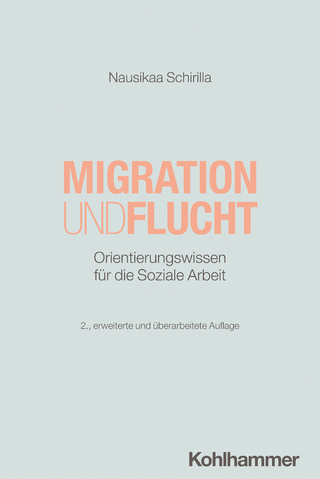
Urban Gun Violence
Rowman & Littlefield (Verlag)
978-1-5381-6646-8 (ISBN)
Through participatory strategies, the proposed book seeks to tap into community spirit to convert urban blight to sites of urban pride and in the process reduce gun violence.The past decade witnessed increased practice and scholarship focused on urban open and green spaces across the country, which are often uplifted as having a multitude of social, psychological, health, and economic benefits for residents. These spaces have often emerged from vacant lots and distressed properties that have been torn down because of the safety hazards they present. A review of the literature on vacant lot effect on health found they influence a wide-range of conditions, including attracting gun violence (Sivak, Pearson, & Hurlburt, 2021).
Enhancing green spaces, such as parks and gardens, where they exist, or introducing them where they do not through conversion of lots, has taken center stage in urban communities of color as a means of addressing a range of social problems, including reducing various forms of violence (Peréa et al., 2019). In instances where vacant lots are converted to green spaces, the benefits can be significant. Urban green space environments promote trust, democratic principles, and resiliency (Hoffman, 2019). This goal, as a result, is worthy of attention for urban-focused researchers, practitioners, and academics.
This book seeks to accomplish six goals: (1) present a state of the art picture of vacant lot and distressed properties conversion; (2) use of case illustrations to concretize values and practice techniques; (3) identify the rewards and challenges of undertaking this form of practice on urban gun violence; (4) identify specific values and principles undergirding urban practice and vacant lots; (5) provide readers with a grounding on the major strategies for reducing urban gun violence to serve as a backdrop for vacant lot conversion; and (6) identify a series of research and practice principles that can guide gun violence reduction interventions.
Melvin Delgado, MSW, PhD, is professor of social work at Boston University. He is the former chair of Macro Practice. He has over forty years of practice, research, and scholarship focused on urban population groups, specifically within the Latinx community. Delgado’s research has addressed a variety of social issues and needs, and he has published over thirty books on urban community practice topics. He is currently the editor of the Oxford University book series on social justice and youth community practice. He is the author of Sanctuary Cities, Communities, and Organizations: A Nation at a Crossroads, Urban Youth Trauma: Using Community Intervention to Overcome Gun Violence, and many other books.
Acknowledgments
Section I: Context Setting
Chapter 1: Introduction
Introduction
National Urbanization
Vacant Lots as a Window into a National Urban Problem
Vacant Lots as Part of the Solution?
Brief Definition of Vacant Lot
Urban Blight
Gun Violence as a National and Urban Problem
Vacant Lots and Gun Violence
Brief History of Urban Greening Movement
Book Goals
Conclusion
Chapter 2: Socio-Ecological and Community Assets-Capacity Enhancement Conceptual Foundation
Introduction
The Promises and Pitfalls of Place-Based Interventions
Socio-Ecological and Assets/Capacity Enhancement Frames
Critique of Socio-Ecological and Assets
The Road of Vacant Lots towards Conversion
Fire—vacant Buildings and Lots
Bulldozing
Urban “High Risk” Communities?
Conclusion
Chapter 3: Community Gun Violence and Community Trauma
Introduction
Challenges in Grasping Neighborhood Gun Violence & Trauma
Defining Community Trauma
Identifying Community Trauma Symptoms
Approaches to Treating Trauma
Trauma Altering Identity
Addressing Urban Community Trauma
Peace Garden Memorials as Place-Based Community Healing
Conclusion
Chapter 4: Statistics & Strategies for Addressing Gun Violence
Introduction
National Statistics
Urban Statistics
Communities of Color Statistics
Urban Hot Spots or Hot People?
Overview of Four Community Violence Prevention Strategies
Hospital Based Violence Intervention (HPVI)
Street Outreach (Cure Violence)
Focused Deterrence
Environmental Crime Prevention (Focus on Vacant Lots)
Conclusion
Section II: Multi-Faceted View of Vacant Lots
Chapter 5: Vacant Lot Remediation—Context Setting
Introduction
Temporal Perspective
Urban Vacant Lots are Universal
Historical Overview
Definitions and Variations
Vacant Lots vs. Vacant Buildings
Place and Vacant Lot Remediation
Understanding the Evolution of Vacant Lots
Conclusion
Chapter 6: Vacant Lot Remediation—Initiatives
Introduction
Classification of Vacant Lot Initiatives
Core Principles for Lot Conversion Initiatives
Vacant Lot Conversion Continuum
Urban Vacant Lots are Universal
Urban Public Works and Public Spaces
Conclusion
Chapter 7: Potential Benefits/Detriments of Vacant Lot Conversions
Introduction
Potential Benefits/Detriments of Vacant Lot Conversions
Economic
Social
Cultural
Political
Health
Bureaucratic Challenges for Collaborating
Urban Land Banks
Conclusion
Section III: Case Illustration
Chapter 8: Case Illustration (Urban Neighborhood Initiatives, Southwest Detroit)
Introduction
Case Illustration Selection Process
Demographics
Social Context
UNI History
Organizational Core Values
Operating Principles
Organizational Community Values
Strategic Approach: Translating Vision into Action
Urban Youth Forestry Program
The Southwest Urban Arts Mural Program
Land Use and Economic Development
Sponsoring Celebrations
Organizational-Community Celebrations
Organizational Challenges
Inclusiveness and Empowerment Across the Life-Span
Collaboration Within and Outside Community
Conclusion
Section IV: Lessons for the Field
Chapter 9: Research Implications
Introduction
A Continuum of Assessment Methods
Innovative Approaches
Case Study Methods
Participatory Approaches
National Organizational Efforts
Conclusion
Chapter 10: Vacant Lots: Practice and Educational Implications
Introduction
Grounding Vacant Lots from a Land Rights Stance
Vacant Lot Guerilla Initiatives
Institutes and Workshops on Vacant Lot Remediation
Challenges and Potential for Collaborations of Community-Based Organizations (CBOs), Local Foundations, and Other Entities
Educational Innovations
Career Path for Converting Vacant Lots
Urban Green Space Practice Potential
Ownership of Lots after Development
A Special Callout to Social Workers: Gun Violence and Vacant Lots
The Promise of Urban Neighborhood “Regeneration Sustainability”
A Happy and Educational Journey
Conclusion
References
Index
About the Author
| Erscheinungsdatum | 14.04.2023 |
|---|---|
| Verlagsort | Lanham, MD |
| Sprache | englisch |
| Maße | 153 x 223 mm |
| Gewicht | 435 g |
| Themenwelt | Sozialwissenschaften ► Pädagogik ► Sozialpädagogik |
| Sozialwissenschaften ► Soziologie | |
| ISBN-10 | 1-5381-6646-1 / 1538166461 |
| ISBN-13 | 978-1-5381-6646-8 / 9781538166468 |
| Zustand | Neuware |
| Haben Sie eine Frage zum Produkt? |
aus dem Bereich


